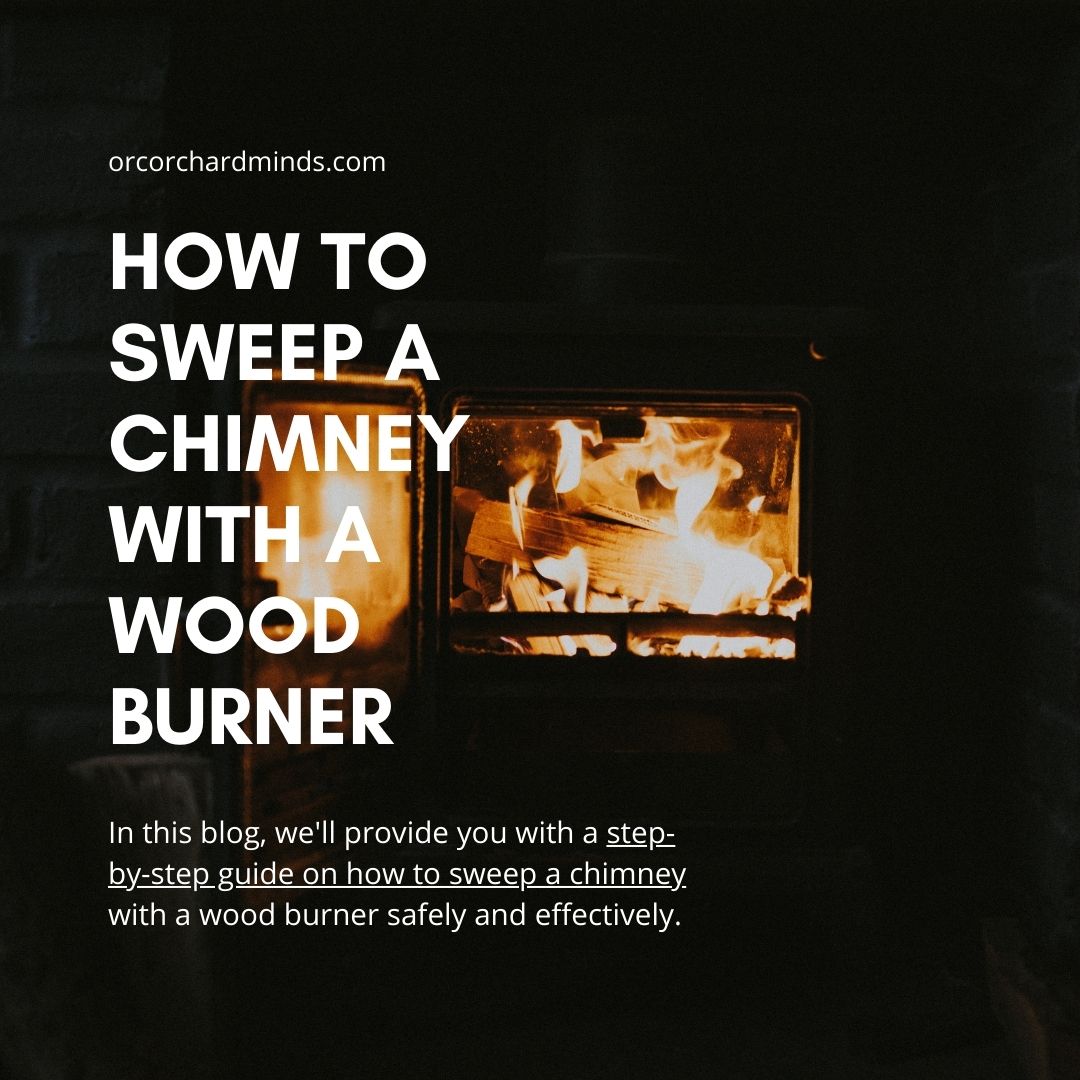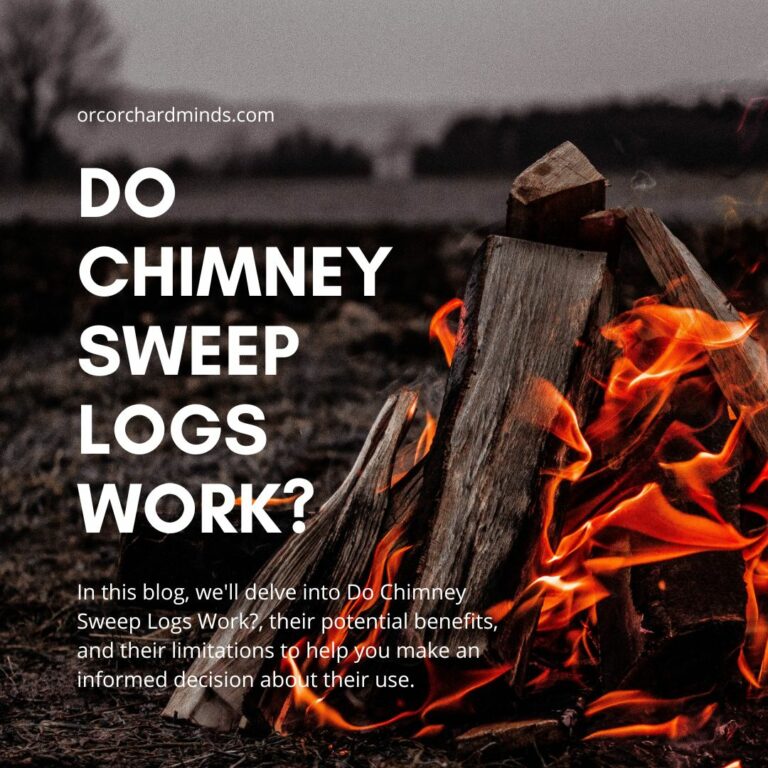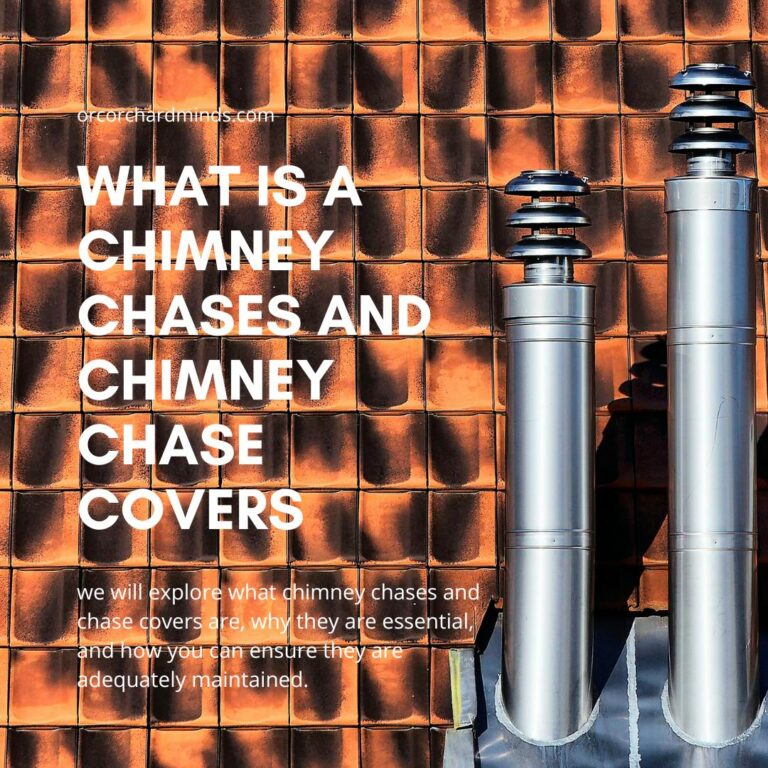Maintaining a clean and safe chimney is crucial when you have a wood burner or fireplace. Over time, creosote, ash, and soot can accumulate in the chimney, posing a fire hazard and reducing the efficiency of your wood burner. Regular chimney sweeping is essential to prevent these issues. In this blog, we’ll provide you with a step-by-step guide on how to sweep a chimney with a wood burner safely and effectively.
Step 1: Gather Your Tools and Safety Gear
Before you start sweeping your chimney, gather the necessary tools and safety gear:
- Chimney sweep brushes and rods (appropriate for your chimney’s size and shape)
- Drop cloths or tarps to protect the area around the wood burner.
- Flashlight
- Dust mask
- Safety goggles
- Gloves
- Old clothes you don’t mind getting dirty
Step 2: Prepare the Wood Burner and Chimney
Ensure the wood burner is entirely relaxed, and there are no smoldering embers. Close the damper to prevent debris from falling into your living space. Lay down drop cloths or tarps to protect the surrounding area from soot and debris.
Step 3: Access the Chimney
Accessing the chimney is a crucial step in the cleaning process. The method you choose depends on your chimney’s design and accessibility. Here are the two common ways to access the chimney:
- From the Roof: Taking safety precautions is essential if you choose to access the chimney from the roof. Use a sturdy ladder adequately secured to the roof’s edge, and have someone assist you to ensure stability. Once on the top, locate the chimney opening.
- From the Fireplace: Alternatively, you can access the chimney from the fireplace. Open the damper or access panel if your fireplace has one. This will give you access to the lower part of the chimney, which you can use for cleaning.
Before proceeding, it’s essential to use a flashlight to inspect the chimney’s interior. Look for visible obstructions, such as nests, debris, or creosote buildup. Identifying and addressing these issues before sweeping will make cleaning more effective.
Step 4: Attach the Chimney Sweep Brush
The effectiveness of chimney cleaning depends on properly attaching the chimney sweep brush to the rods. Follow these guidelines for this step:
- Ensure that you have the appropriate size and type of chimney sweep brush for your chimney. Different chimneys may require other brushes, so choose one that fits your specific chimney dimensions.
- Attach the brush securely to the end of the rod or rods. Most chimney sweep brush kits come with threaded connections that allow you to screw the brush onto the rod.
- Make sure the attachment is snug and secure. A loose brush can be ineffective in removing creosote and soot, so double-check that it won’t come loose during use.
Step 5: Start Sweeping
With the brush attached and secure, it’s time to start sweeping the chimney. Here’s how to do it properly:
- If you accessed the chimney from the roof, carefully lower the brush down the flue until it reaches the bottom of the chimney. If you enter from the fireplace, insert the brush into the lower part of the chimney.
- Begin gently pushing the brush up and down the chimney flue. Use a steady motion to ensure the brush contacts the chimney walls. Avoid using excessive force, as this can damage the chimney lining.
- Sweep the chimney thoroughly, ensuring the brush reaches all corners and bends. This thorough cleaning will help remove creosote, soot, and any other deposits that may have built up over time.
- Periodically withdraw the brush to check for any debris or buildup that it has loosened. If you encounter significant resistance or obstruction, stop and investigate further to ensure the safe removal of the blockage.
Remember to take your time during the sweeping process and exercise caution to avoid damage to the chimney or injury to yourself. Regular chimney maintenance is essential for safely and efficiently operating your fireplace or wood-burning stove.
Step 6: Remove Debris
As you sweep the chimney, managing the debris accumulating during the cleaning process is essential. Here are the details for this step:
- Vacuum Cleaning: Using a vacuum cleaner with a HEPA filter is a clean and efficient way to remove the soot, creosote, and ash that falls to the bottom of the chimney. Attach a long hose or nozzle to the vacuum to reach the debris easily.
- Chimney Shovel and Bucket: Alternatively, you can use a chimney shovel and a sturdy bucket to scoop out the debris falling to the bottom of the chimney. Be cautious when doing this to avoid dislodging any loose bricks or damaging the chimney liner.
- Safety Precautions: Regardless of your chosen method, always wear appropriate safety gear, including gloves and a dust mask, to protect yourself from inhaling harmful particles during debris removal.
Step 7: Check for Damage
Inspecting the chimney’s interior for damage is a crucial step in ensuring the safety and functionality of your chimney system. Here’s how to perform this step:
- Careful Examination: With the debris removed and a clear view of the chimney’s interior, carefully inspect for any signs of damage. Look for cracks in the chimney liner, loose or deteriorating bricks, and other structural issues.
- Using a Mirror and Flashlight: If your chimney has bends or hard-to-reach areas, you can use a mirror and flashlight to see those areas more clearly. This can help you identify damage that might otherwise go unnoticed.
- Consult a Professional: If you detect any damage or are uncertain about the condition of your chimney, it’s essential to consult a professional chimney technician or inspector. They have the expertise to assess and address structural issues and ensure your chimney is safe.
Step 8: Clean Up
The final step involves cleaning up the work area and disposing of debris properly:
- Remove Drop Cloths or Tarps: Carefully remove any drop cloths or tarps around the wood burner or fireplace to catch debris. Fold them carefully to contain the mess and prevent soot and creosote spreading.
- Dispose of Debris Safely: Dispose of the debris you collected safely. Soot, creosote, and ash should be preserved in regular household trash. Instead, consult local regulations or waste disposal guidelines for proper disposal options. You may need to take the debris to a designated disposal site in some areas.
- Clean the Surrounding Area: Thoroughly clean the area around the wood burner, fireplace, or chimney to ensure no residual soot or creosote remains. This includes wiping down surfaces, vacuuming loose particles, and returning furniture or equipment to its original position.
Step 9: Reopen the Damper
After completing the chimney sweep and cleaning the area, reopening the damper is essential. Here’s how to do it:
- Locate the Damper Control: The damper control is typically inside the fireplace or wood burner. You may use a lever, handle, or knob to open or close the damper. Refer to your wood burner’s user manual if you need help finding it.
- Open the Damper: Gently move or turn the damper control to the “open” position. This will allow proper ventilation and airflow in your chimney system.
- Check for Smooth Operation: Ensure the damper opens and closes smoothly without obstructions or resistance. If you encounter any issues, consult your user manual or have a professional technician inspect and repair the damper mechanism.
Reopening the damper is essential for your wood burner’s safe and efficient operation. It allows smoke and gases to exit the chimney, preventing them from entering your living space.
Step 10: Schedule Regular Maintenance
Chimney sweeping is not a one-time task; it’s part of a regular maintenance routine to keep your chimney and wood burner in optimal condition. Here’s how to handle this step:
- Frequency of Maintenance: It’s advisable to schedule chimney sweeps and inspections at least once a year. However, the specific frequency may vary depending on factors such as the type of fuel you use (wood, gas, etc.), the amount of use, and local regulations. Consult with a professional chimney technician for guidance on the ideal maintenance schedule for your situation.
- Professional Inspection: Involving an experienced chimney technician in your regular maintenance routine is crucial. They have the knowledge and tools to thoroughly inspect your chimney, including checking for structural issues, creosote buildup, and potential hazards.
- Documentation: Keep records of each chimney sweep and inspection. Note any recommendations or repairs made by the technician. This documentation helps you track the condition of your chimney over time and ensures you stay on top of necessary maintenance.




Leave a Comment